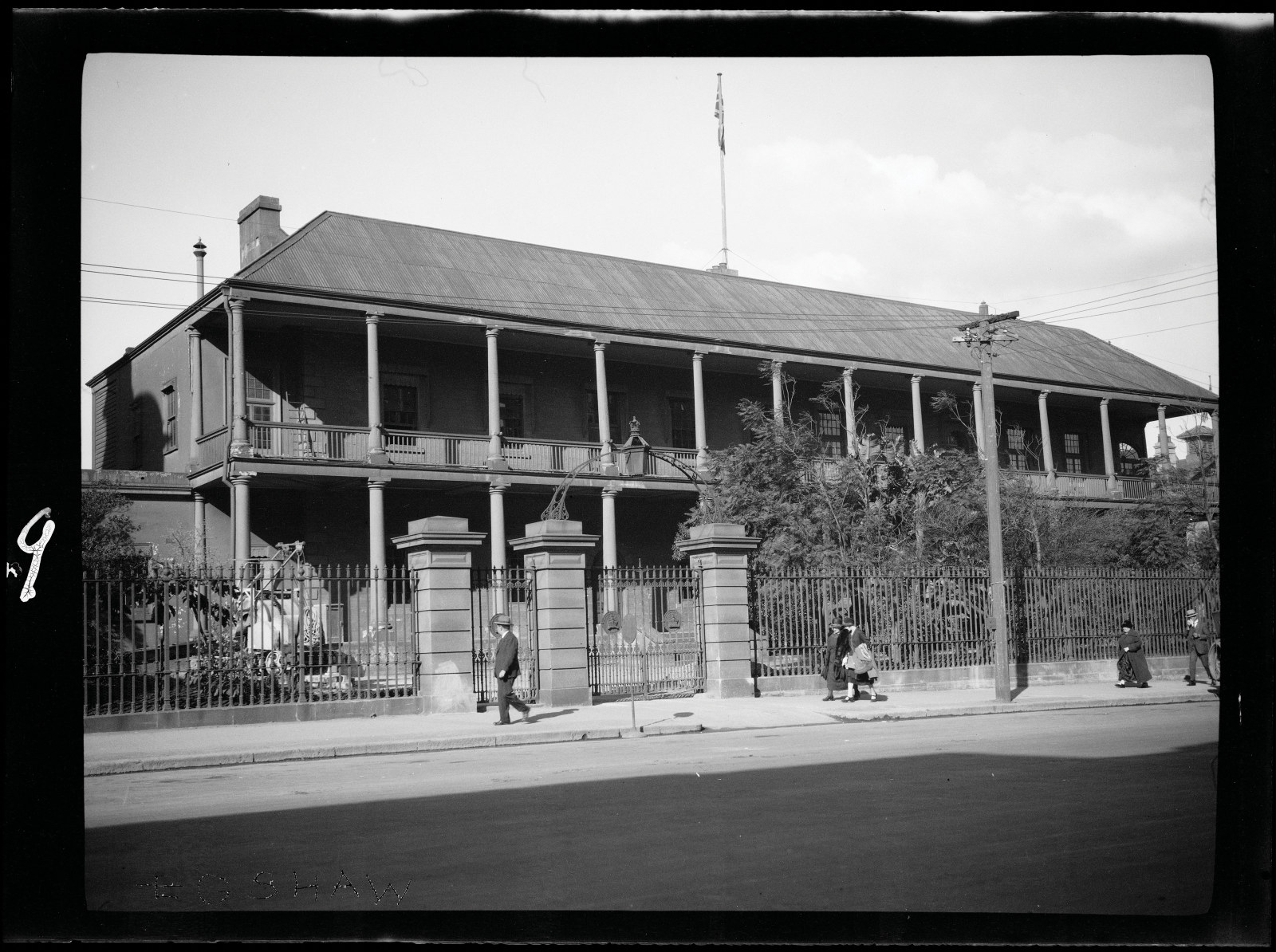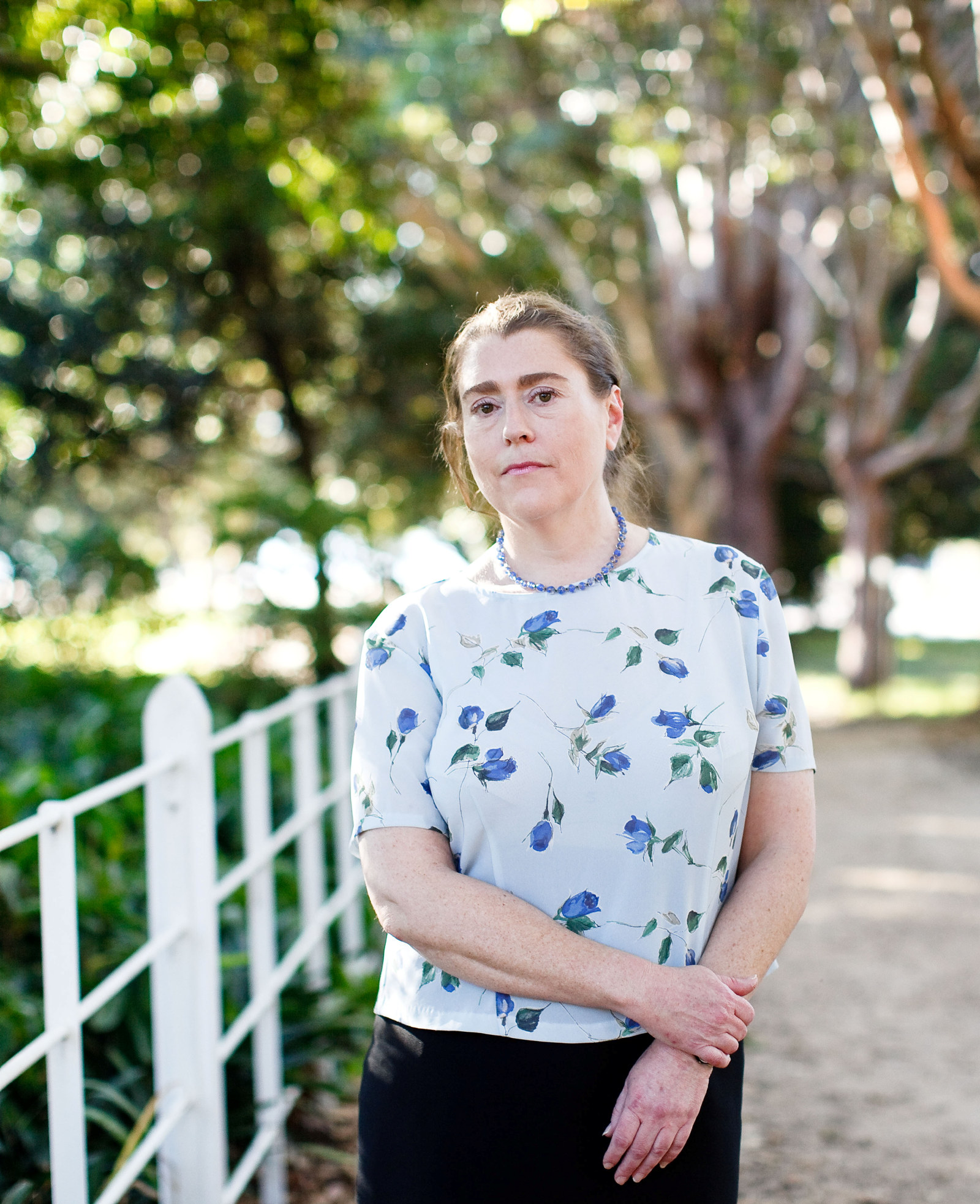Unexpected views
Over the decades, photographers have captured unexpected glimpses of the Mint’s history.
The Deputy Mint Master’s drawing room, shady gardens and the stairs to a long-vanished building made charming subjects. While the decorations for the US Navy visit in 1908 enhanced the streetscape, a defence force recruiting hut tacked on to the main building in 1953, the cars covering the forecourt and the long-term presence of a petrol pump for the Ministerial Motor Depot were much criticised.
Even before the Mint closed in 1926, the Government Insurance Office had moved onto the site. It was followed by a range of government departments and courts, some temporary, others for longer duration. These included the Housing Commission, Land Tax Office, Department of Education, Family Endowment Department, National Emergency Services Department, Divorce Office, Electrical Contractors and Electricians Licensing Board, District Courts and the Ministerial Motor Depot. The latter provided cars for nearby Parliament House and used buildings on the northern side of the site as garages.
In 1878, the southern half of the Mint building became the residence of the new Deputy Mint Master, Robert Hunt, a talented amateur photographer. The former drawing room, dining room, kitchen and library downstairs, and bedrooms above are unrecognisable today. Hunt’s photographs provide an enchanting window into the place where he lived and worked.
Created in the 1890s, the Juliet balcony overlooking the courtyard and the circular garden bed, with its small fountain and pond, were part of the Deputy Mint Master’s residence. The balcony survives today, but the garden was removed to make way for urgently needed offices and staff facilities for the site’s new occupants.
These were the entrance stairs to one of the three buildings at the rear of the Mint site constructed around 1870 to provide additional staff offices and accommodation. The buildings were demolished in 1952 to be replaced by the current Hospital Road court complex.
In August 1908, hundreds of thousands of Sydneysiders welcomed the arrival of the US Navy, known as the Great White Fleet because its 16 battleships were painted white rather than grey. The fleet’s visit, part of a global tour, was occasion for a week of celebrations. There were parades, official receptions, concerts, fireworks, sporting events, balls, dinners and excursions for the visiting Americans. Streets and buildings – including the Mint – were decorated, and illuminated at night.
In early 1953, the Defence Forces information bureau in Martin Place was relocated to Macquarie Street. The recruiting hut was condemned by those who thought its new location abutting the Mint inappropriate and by Housing Commission staff who had now lost a favourite parking area.
This photograph was originally published in Australian outrage: the decay of the visual environment (1966), a study by the Royal Australian Institute of Architects. The sight of this historic building inappropriately used as the backdrop to a car park – complete with petrol bowser and attendant, and the parking sign stencilled on one of its columns – did indeed provoke outrage. Fortunately, appreciation for our heritage has grown, and the building is now safely conserved.
Related

Museum stories
The changing face of the Mint
As photographers documented the evolving face of the Mint, they recorded changes to the site and streetscape
Published on
